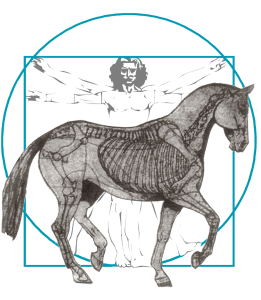 With scrutiny of medications in racehorses at an all-time high, it’s no wonder that some trainers are turning to alternative therapies to keep their charges in tip-top shape.
With scrutiny of medications in racehorses at an all-time high, it’s no wonder that some trainers are turning to alternative therapies to keep their charges in tip-top shape.
One such proponent of thinking outside the box is trainer Dale Romans, who conditions Kentucky Derby-bound Keen Ice and Kentucky Oaks contender Birdatthewire.
While Romans has no hard-and-fast statistical evidence that the modalities he uses work, he notes that the technology he uses was designed by NASA to loosen up muscles and promote circulation in humans.
“The biggest thing on natural stuff is that if they [the horses] like it,” he said. “I figure that nature tells them to like it for a reason and it’s doing something good, even if I can’t pinpoint what it is.”
Romans says all his horses, including the two that will race this weekend, receive two alternative therapies to keep them in top racing shape: therapy with a Magna Wave machine and a vibration plate.
“All that stuff, I think, needs to be used early, as more preventative than when you’re trying to heal something,” says Romans.
Magna Wave PEMF
At first glance, the Magna Wave looks like it might feel a little painful when in use. A standing horse has a large, curled hose attached to a control box draped or held over areas of his body and the resulting pulses cause his muscles to contract. Romans said the machine can deliver a bit of a sting when turned up in intensity, but the horses don’t seem to be bothered at all. Romans’ horses find the machine comfortable enough that they can receive the treatment in their stall with no sedation or restraint, and sometimes grab a few mouthfuls of hay while the hose is moved over their bodies.
Magna Wave High Voltage Pulsed Electro-Magnetic Frequency (PEMF) therapy is a non-invasive alternative therapy that has no side effects or risks of use, according to its manufacturer. This machine works by sending high-power electromagnetic pulses through the hose, creating what feels like a focused vibration in the hose. The pulses are intended to benefit the horse by improving circulation, increasing blood oxygen, stimulating the lymphatic system, relaxing muscle spasms, relieving tension, enhancing muscle tone, and increasing range of motion—all without the use of drugs. Additionally, pain and inflammation are reduced on a horse dealing with an injury, and healing is promoted by increasing the blood oxygen level.
A traditional treatment takes about 30 minutes, and Romans’ horses receive treatment about three times a week. There is no racing rule that designates how often or how far out from the race a horse may receive a Magna Wave treatment.
In sensitive areas (those with lots of tendons and muscle), the muscles twitch because of super oxygenation and molecule movement in the cells. Though the horse’s health team may know which area on an animal is causing issues, the Magna Wave is used on the entire horse. This allows the area to be continuously helped as super-oxygenated blood from the rest of the body continues to flow to and through the area.
Another modality Romans uses is a vibration plate. Touted to do everything from promoting circulation, bone density and muscle mass to reducing swelling, inflammation and injuries, the plate isn’t much to look at.
The horse steps up onto two large rectangles that are pushed together, and is asked to stand while the machine is turned on, causing the entire apparatus to vibrate. On this machine, like the Magna Wave, the intensity can vary. The plate is also believed to improve joint health, prevent bucked shins, improve under-run heels and thin soles, and speed healing of fractures.
Romans said that his horses don’t mind stepping up on to the plate and seem to anticipate the comfort it provides.
“After they’ve been on it about 10 seconds, they all want to stand on it,” the trainer said.
As the plate is supposed to build bone density, Romans puts his 2-year-olds, as well as his seasoned racehorses, on it daily.
While still not as mainstream as traditional Western medicine like Bute and Banamine, alternative therapies are gaining traction on backstretches and in training barns across the country. Though many don’t have years of scientific research backing them, Romans sums it up well: “At the least of it, it makes them happy–so they’re happy, and I am happy.”
Dr. Martha Rodgers of Shephard Hill Equine in Lexington, Ky. believes Romans is on the right track.
“The horses do feel better alternative therapies like the Magna Wave and the vibration plate (he isn’t imagining that!) and it increases circulation at the cellular level,” said Rodgers. “Used appropriately, complementary therapies can only benefit the horse.”
Rodgers believes that in a future with fewer medications available to trainers, natural healing modalities may provide horsemen with an acceptable alternative.
Rodgers cautions that trainers should work closely with a veterinarian if using technology like the vibration plate or Magna Wave to help a horse heal from a serious injury.
by Sarah Coleman | 05.01.2015 | 4:53pm
Copyright © 2017 Paulick Report.


